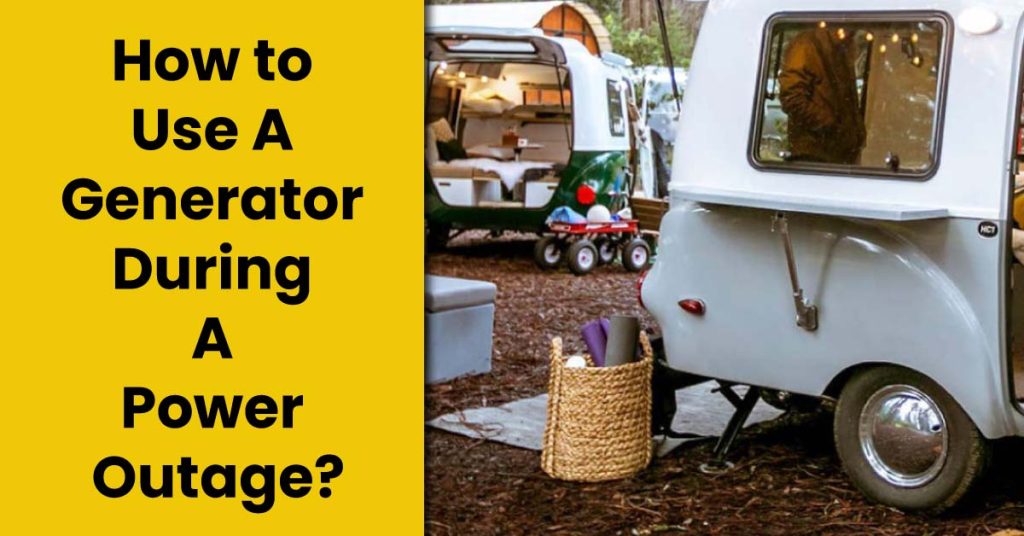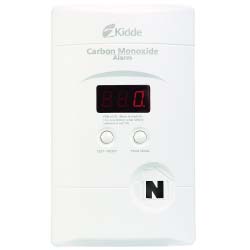How to Use A Generator During A Power Outage? – 7 Steps
In this article, you will learn how to use a generator during a power outage, how to prevent carbon monoxide danger, placement of generator, what your generator run, grounding a generator, and how to prevent overloading.
During Hurricane Ida and its aftermath, more than a million of people lost power with frequent and prolonged power outages.
More and more people are buying standby and portable generators to cover their basic power needs. The sale of generators has risen to 5% from 3% over several years due to power outages, and this sale will likely grow.
Generator technology is improving rapidly, nowadays more powerful, quieter, reliable, compact, and durable generators are entering the market at a budget price.
Though generators power your home in tough times, the risks like electric shocks, electrocutions, fires, and carbon monoxide poisoning from the engine exhaust should also be considered.
That is why we have explained in detail the proper use of generators during a power outage.
How To Use A Generator During A Power Outage

1. Install Carbon Monoxide Alarm:

First and foremost, installing carbon monoxide that detects a higher concentration of CO is extremely important.
Carbon monoxide is an odorless, colorless, and poisonous gas. Breathing in too much can lead to headaches, upset stomach, vomiting, dizziness, chest pain, weakness, and even death.
On January 8, 2022, at least 22 people were found dead stranded in a snowstorm In Murree, Pakistan. The incident is known as the Murree incident 2022. One of the main reasons was carbon monoxide poisoning overnight from the choked exhaust. The incident taught us how dangerous CO can be.
Nowadays, a lot of generators have built-in co-minder sensors to sense carbon monoxide concentration. If the CO level increases, the generator automatically shuts off.
Checkout our guide about generator safety.
2. How To Use A Generator During A Power Outage – Placement Of A generator:
3. Disconnect The Normal Power Source And Turn Off The Appliances:
For huge standby generators, licensed professional electricians connect the generator to the main control panel. It starts automatically within seconds.
But, a lot of people in the United States purchase portable inverter generators within the 2000 to 4000-watt range. So for that, you would need to disconnect your normal power (main breaker) before connecting the generator’s power plug.
In case you forgot to, the electrical current goes reverse back through the circuit. The backfeeding of power could electrocute the people in the neighboring building.
Turn off all the appliances too. Generators take a few seconds to maintain the constant RPM, to avoid a sudden surge in power, turn ON the appliances a few seconds after the generator starts.
The use of proper generator electrical cords that are designed for heavier use is recommended.
4. What Can A Generator Run? Don’t Overload Your Generator:
First, you need to calculate the amount of wattage you need to run on your generator. For that, check out how to calculate watts for a generator.
To avoid overloading, the following is a rough estimation of the appliances we run:
For Home:
| Appliance | Quantity | Peak watts | Running watts |
|---|---|---|---|
| A standard fridge | 1 | 1200 | 200 |
| Microwave oven | 1 | 1000 | 1000 |
| Coffee maker | 1 | 600 | 600 |
| AC (10,000) BTU | 1 | 4400 | 3000 |
| Electric blanket | 1 | 200 | 200 |
| Computer | 1 | 250 | 250 |
| Incandescent lights | 5 | 300 | 300 |
| Sump Pump | 1 | 800 | 1500 to 300 |
| Well pump | 1 | 1000 | 2000 |
For Tools:
| Appliance | Running watts | Surge watts |
|---|---|---|
| Circular saw | 1400 | 2300 |
| Electric drill | 600 watts | 600 watts |
| Portable air compressor ½ HP | 1000 | 1600 |
| Chainsaw | 1500 | 1500 |
| Bench grinder | 1400 | 2500 |
For RV:
| Appliance | Running watts | Surge watts |
|---|---|---|
| RV AC Unit (10,000 BTU) | 1600 | 1000 |
| RV AC UNIT (15,000 BTU) | 3300 | 2000 |
| RV FRIDGE | 600 | 180 to 190 |
| Laptop | 250 | 250 |
| TV | 120 | 120 |
| Incandescent lights | 60 | 60 |
If you want to charge your electric car with a generator please follow this guide: Charging Electric car with a generator
Don’t push your generator to the limit. Leave wattage unused. If you overload your generator to run a few extra appliances, it will cause massive friction and will shorten the lifespan of the generator.
5. How To Use A Generator During A Power Outage – Grounding A Generator:
The connection of an electrical circuit to a reference ground is called grounding. There are several steps involved in grounding a generator. If you are not sure, seek professional help.
6. Use And Storage Of Generator Fuel:
Before refueling, turn off the generator and let it cool for a minute. Gasoline could easily ignite if spilled on hot engine parts.
For a small quantity, you can store your fuel in a place where there is no chance of natural ignition. Completely seal the container, don’t let the vapors escape.
Contact your local fire department or follow the OSHA to store the fuel in a cool, dry, and ventilated place away from all potential fire hazards.
7. How To Properly Shut Down The Generator?
Turn off all the appliances and unplug their cords from the generator if any before turning it off.
If you are not going to use it for a while, drain all the gasoline from the tank. Clean the air filter, and check the spark plug.

Alex Black is a seasoned electrical engineer with a remarkable 8-year track record specializing in appliances, generators, and transfer switches. With extensive hands-on experience in the field, Alex possesses a deep understanding of electrical systems and their intricate workings. Throughout their career, Alex has consistently demonstrated expertise in designing, troubleshooting, and maintaining various electrical appliances.
